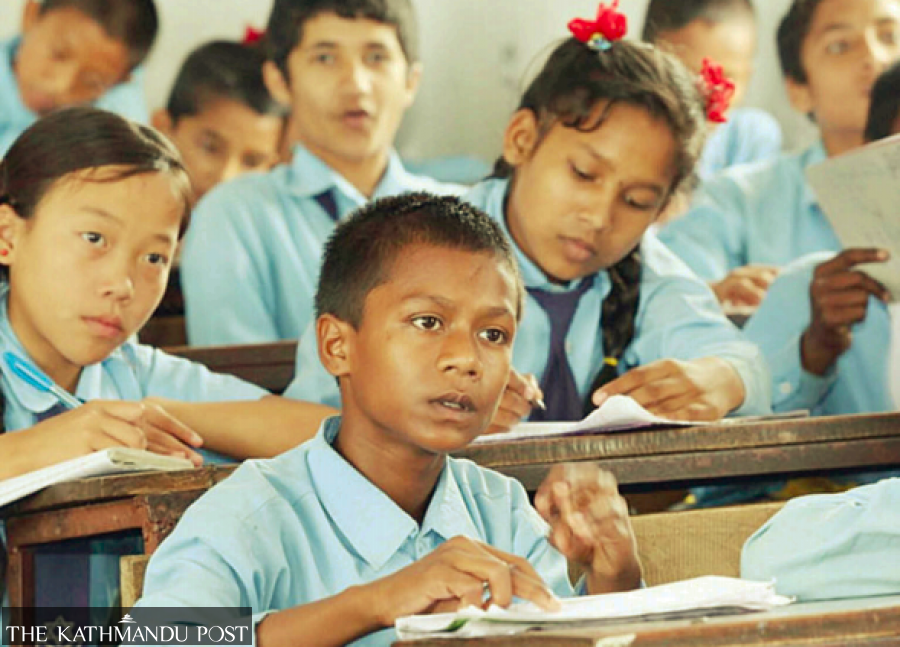Lack of Quality Education: A Global Crisis

Nepal, November 3 -- The connection between education and the government has consistently been intricate. Authoritarian governments often view educated individuals with analytical skills as a danger to their authority by challenging established power structures. Before the conclusion of the Rana rule, educational opportunities for the general population were restricted. The literacy level at that time stood at just 2 percent, as part of a calculated strategy to deny people access to learning.
Monarchical governance had a major impact on educational access depending on one's caste. Apart from the ruling elite, the upper caste, particularly the Brahmins, held more influence over determining educational principles. In the Panchayat era, textbooks were carefully designed to create a uniform, overly masculine "courageous" national story, wiping out much of Nepal's historical context.
In 2001, the administration of schools was transferred to local communities under the 7th amendment to Nepal's Education Act, 1971. The process encountered difficulties due to ambiguous responsibilities, the emergence of private schools, and the Maoist conflict. The present education system in Nepal deals with three significant issues: underdeveloped public schools, heavy political influence in education, and pervasive corruption.
Neglected public schools
As of 2024, Nepal is home to roughly 35,447 schools, with 74 percent of students attending public institutions. However, these schools continue to face issues of insufficient funding and excessive student numbers. On the other hand, private schools cater to just 26 percent of students but are more prevalent in urban regions and critical sectors related to capital development, highlighting a disparity in access. More than half of community schools have fewer than 100 students. Additionally, the outcomes of the Secondary Education Examination (SEE) in recent years indicate deep-rooted problems. In the 2024 SEE, 52.14 percent of students received a "non-graded" result, meaning they did not pass.
These numbers are more than just figures; they indicate a deep-rooted breakdown. Public schools are overcrowded, with one teacher responsible for hundreds of students, making effective education extremely difficult. Ongoing evaluation that takes into account elements such as demographic shifts, internal migration, and school levels is necessary to grasp the present requirements of public schools.
Excessive politicisation
In the last twenty years, teachers' unions have emerged as the most powerful entities in school administration. While the Education Act prohibits school teachers from taking on political positions, central leaders of teacher organizations state that almost all of the approximately 300,000 teachers employed in Nepal's community schools are linked to political parties. The connection between teachers' unions and political parties plays a key role in understanding governance challenges within Nepal's school education system. When a teacher's union is connected to a political party, that party's priorities affect school politics, distribution of resources, and regulatory control.
During the 2022-2023 academic year, 18.5 percent of community schools faced delays in forming school management committees because of political interference. Numerous major protests by teachers have occurred repeatedly, with the latest one taking place in 2025, impacting millions of students. For a long time, education has been influenced by politics, resulting in leaders lacking integrity and citizens failing to hold their leaders responsible. This has led to an ongoing cycle of excessive politicisation across all areas of Nepal.
Corruption
The education system in Nepal, similar to other sectors, suffers from corruption at every level, ranging from primary schools to higher education institutions. In the fiscal year 2023-24, complaints related to education accounted for 15.79 percent of all reports received by the Commission for the Investigation of Abuse of Authority, making it the second most reported sector. For instance, 124 local governments spent Rs2.80 billion on midday meals without maintaining any attendance records, while 143 municipalities distributed Rs32.5 million in unverified teacher salaries, and Rs16.91 million in scholarships was misused across 134 local bodies. Higher education in Nepal is also affected by this issue. At Purbanchal University, several deans were found guilty of taking bribes and misappropriating Rs400 million in construction funds.
Corruption extends beyond public schools. Private institutions also face similar issues. In Nepal, private school administrators are benefiting due to political connections, uncontrolled tuition fees, and superficial capitalism. According to some estimates from the National Living Standard Survey of 2022-23, sending a child to a private school costs Rs57,588 per year, which is 10.45 percent of an average household's income and almost 19 percent for low-income families. This has a significant impact on Nepal's education system, particularly for disadvantaged groups. Unfortunately, these high fees remain largely unchallenged and unexamined.
If education is viewed more as a privilege rather than a fundamental right, it hinders social mobility and equal involvement. According to a study from the Nepal Economic Forum, corruption within private educational institutions remains unchecked. This issue is evident in foreign-linked universities in Nepal. Many colleges function without the necessary approval from the ministry by exploiting legal gaps.
Need for nuanced reforms
The educational framework in Nepal has not succeeded in cultivating leaders who embody democratic principles or fostering citizens with a sense of civic responsibility. It has allowed those seeking rents and populists to exploit the shortcomings of the education system. Politicians, the education sector, government officials, and businesspeople can benefit unfairly from this broken system. This situation will have significant consequences for our education system. When education is viewed as a means to generate profit, public confidence in the education system begins to decline. Subsequently, poor learning results will hinder the development of human capital and impede social advancement.
Unfortunately, Nepalis have continually been denied access to quality education. The ongoing lack of proper education across generations has resulted in a weak base for the country's development. True education goes beyond mere words and ideas; it serves as a means to understand ourselves as individuals and to challenge the different shortcomings within society.
Post a Comment for "Lack of Quality Education: A Global Crisis"